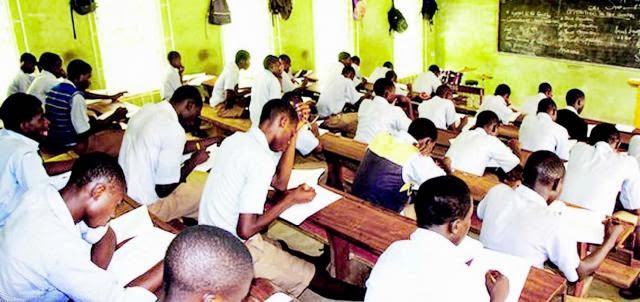53% Fail To Make Five Credits In WASSCE

The West African Examinations Council has released the results of the November/ December 2015 West African Senior School Certificate Examination, declaring that only 33.51 per cent of the candidates obtained six credits and above in the examination.
The new Head of National Office of the Council, Olutise Adenipekun, who released the results in Lagos on Thursday, however, failed to give fuller details of the candidates’ performance in the examination, especially in English Language and Mathematics.
This is the first time the council will release its results without giving such details.
According to Adenipekun, the council has refrained from giving the details because the Nov/Dec examination is “a make-up assessment.”
Despite appeals from journalists, the HNO refused to state the exact number of candidates that obtained credits in five subjects and above including English Language and Mathematics.
To seek admission to the nation’s university, a candidate must obtain credits in five subjects, including English Language and Mathematics.
He said, “The idea of pass or fail in Nov/Dec WASSCE is different from pass/ fail in May/June WASSCE. The May/June examinations are school-based exams where the candidates are expected to transit from secondary school to higher institutions. The case is not the same with the Nov/Dec diet. It is a make-up examination. It is an examination for candidates who have deficiencies in one subject or more.”
Adenipekun, however, revealed that 79,490 candidates obtained six credits and above, noting that the council withheld the results of 28,768 others for their alleged involvement in examination malpractice.
Two hundred and thirty-seven thousand, one hundred and fifty-four candidates comprising 124,512 males and 112,642 females sat for the examination. Thirty-seven visually challenged persons also sat for the examination.
The HNO added, “Of the total number of candidates that sat for the examination, 79,490 candidates, representing 33.51per cent obtained six credits and above; 113,573 candidates, representing 47.88 per cent obtained five credits.
“In addition, 146,253 candidates, representing 61.67 per cent obtained credits and above in four subjects, while 175,718 candidates, representing 74.09 per cent obtained credits and above in three subjects. A total of 200, 304 candidates (84.46 per cent) obtained credits and above in two subjects.”
In the Nov/Dec 2014 WASSCE, out of the 246,853 candidates, who sat for the examination, only 72,522 candidates, representing 29.37 per cent, obtained credits in five subjects, including Mathematics and English Language.
In otherwise, over 70.63 per cent of candidates failed the examination.
In 2013, of the 298,971 candidates who sat for the examination, 86,612 candidates, representing, 29.17 per cent obtained credits in five subjects and above, including English Language and Mathematics.
Meanwhile, Adenipekun has pledged the council’s commitment to supporting teachers to ensure that candidates performed better in examinations.
According to him, the council understands the rudiments of standardised testing and so is willing to collaborate with states in training their teachers for optimal performance in external examinations.
On measures to check malpractice, the HNO said the council in the 2015 Nov/Dec diet deployed a new technology, Credence One, in the conduct of the examination.
He added, “It is the intersection of mobile communications and biometric technology. It is a mobile biometric identification and verification system, built on the Android Operating System. Using “Credence One” is as simple as using a mobile phone. It is used to initiate and complete the biometric verification of candidates’ fingerprints.
“The device is programmed to compare the scanned fingerprint template with the initial templates captured during registration and display the candidate’s details to check impersonation. The system also takes candidates’ attendance and automatically sends the records online to the remote central server for reporting. With this innovation, we can boldly say that WAEC, Nigeria now has its biometric fingerprint identification and verification system on a mobile device.”









0 Comments